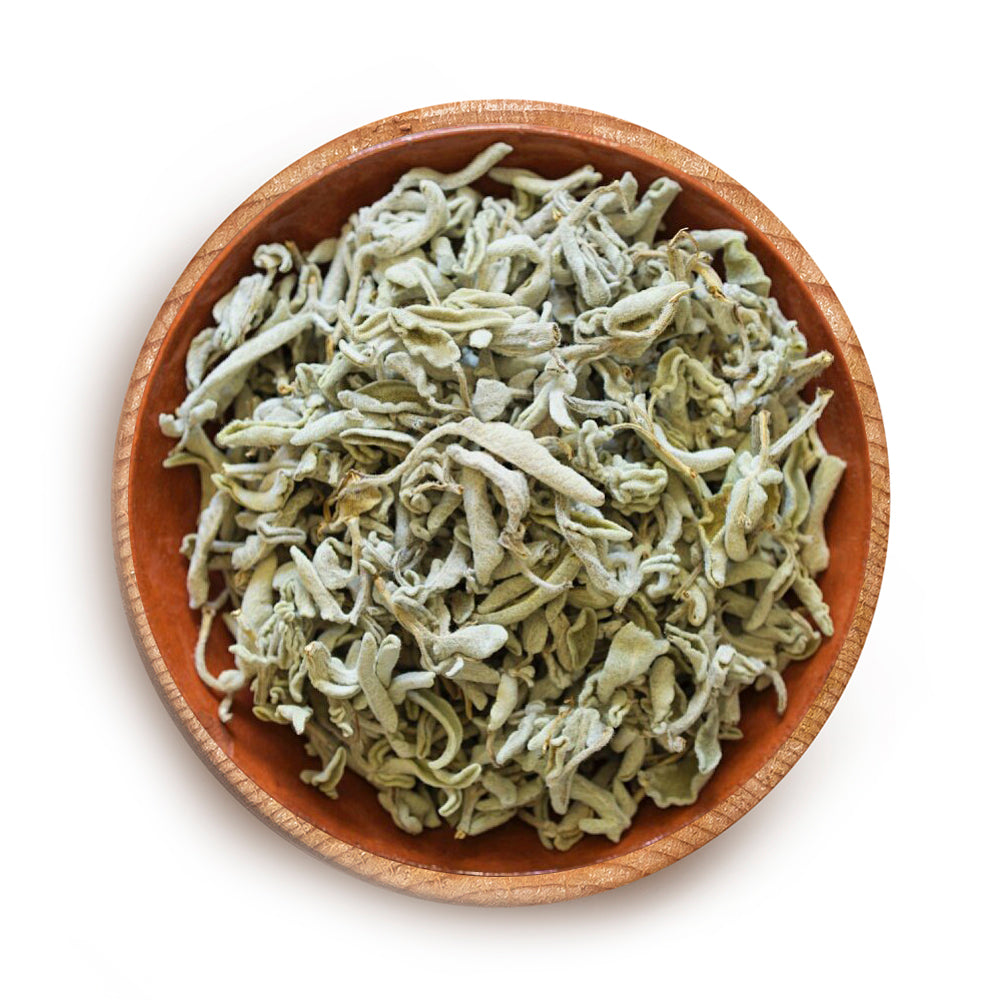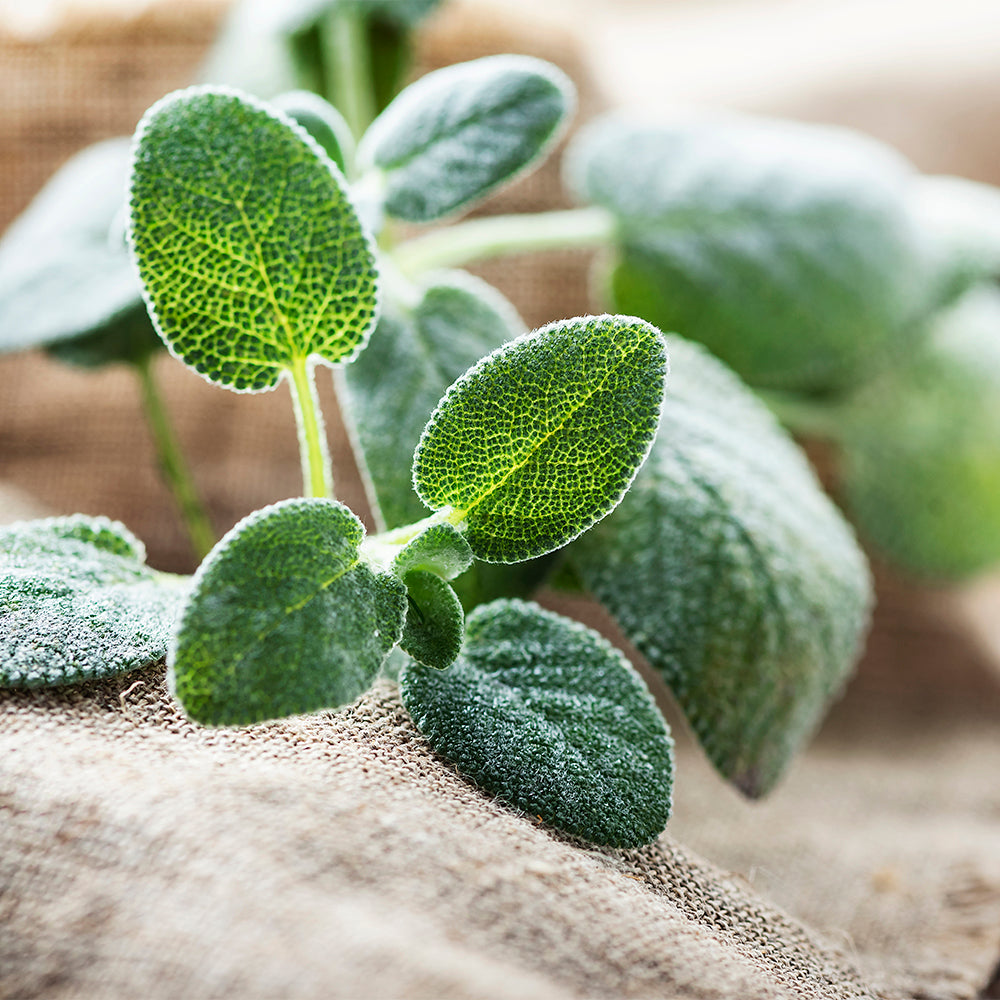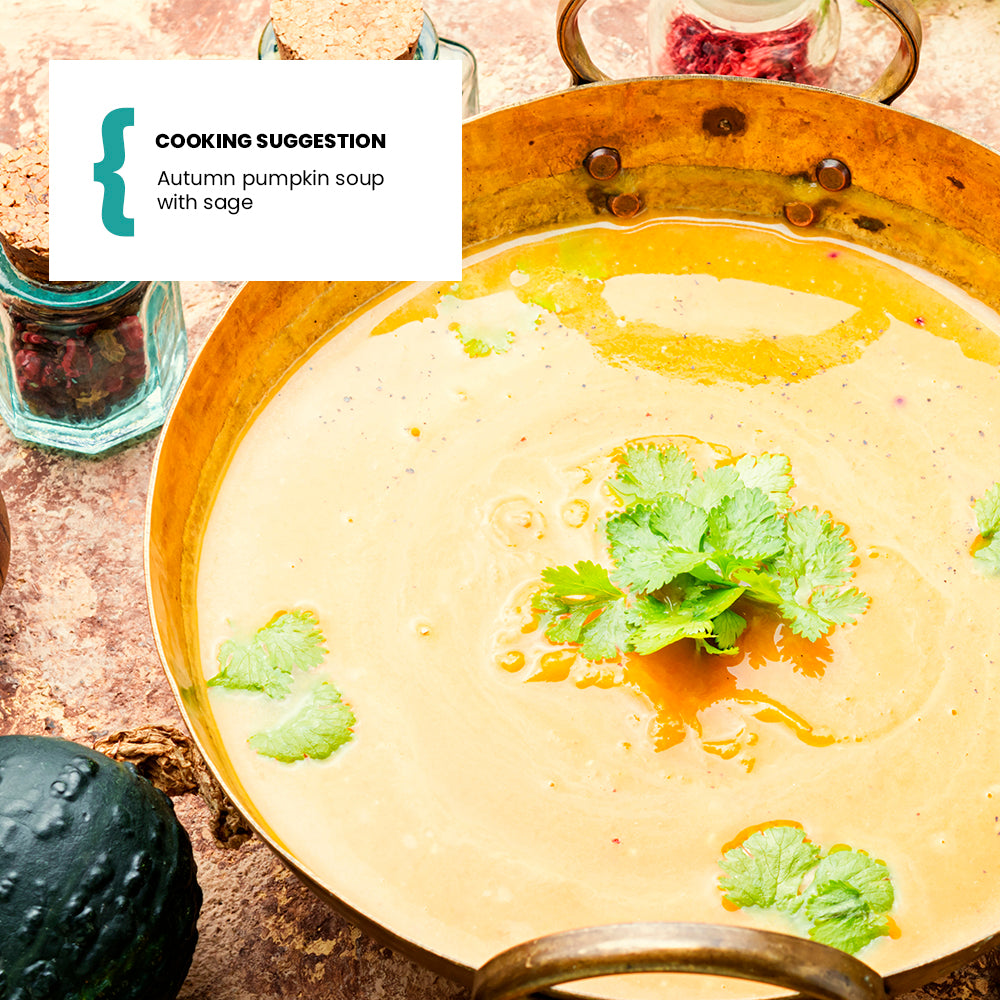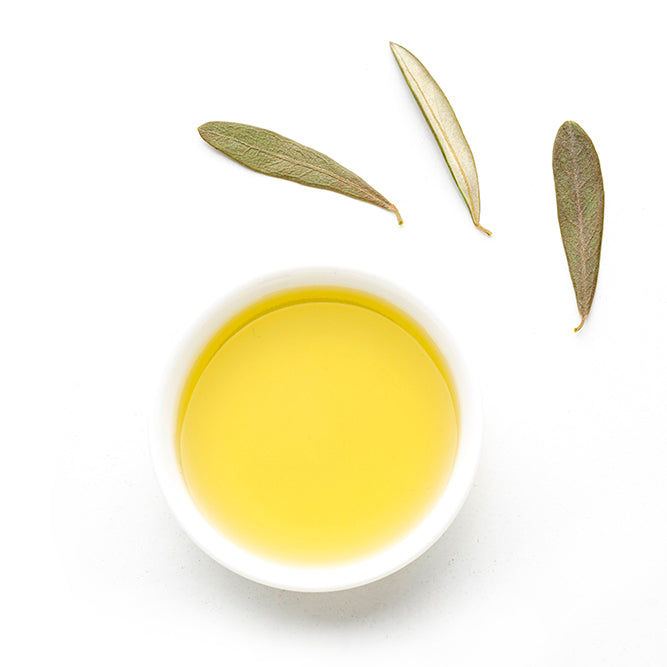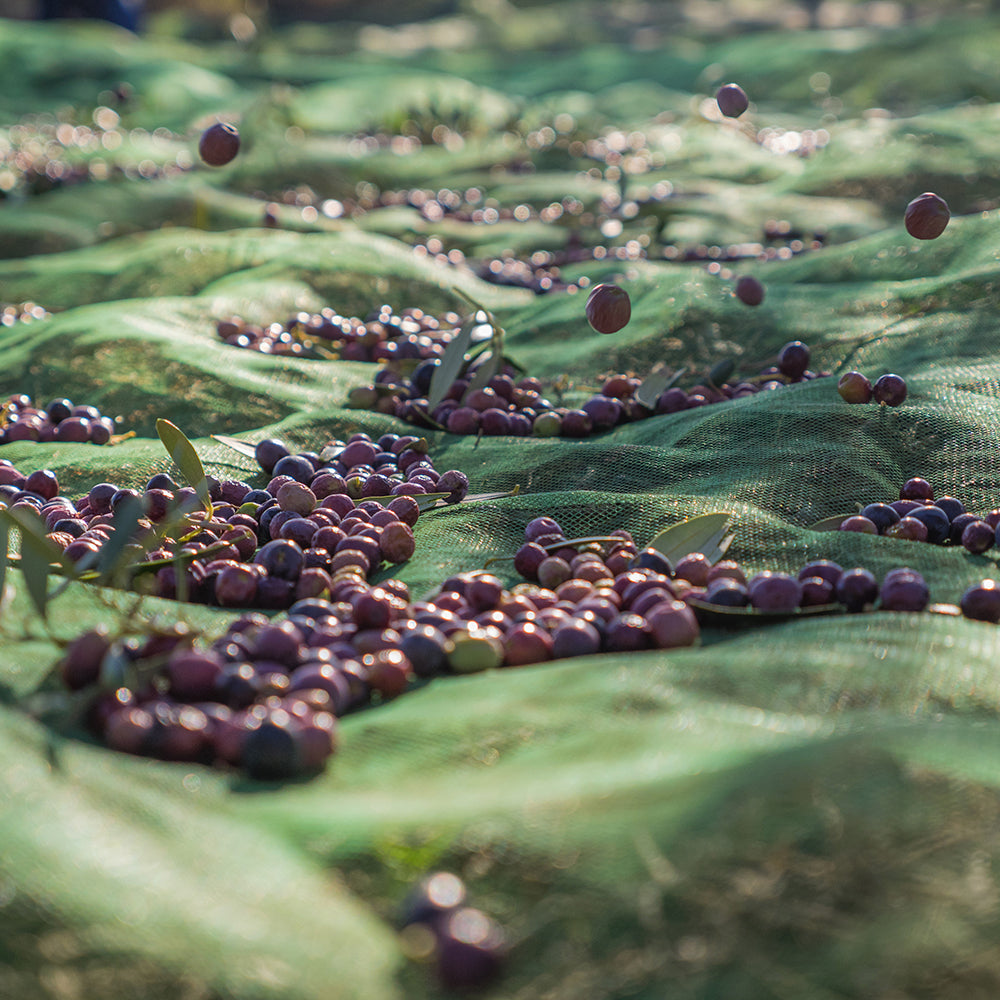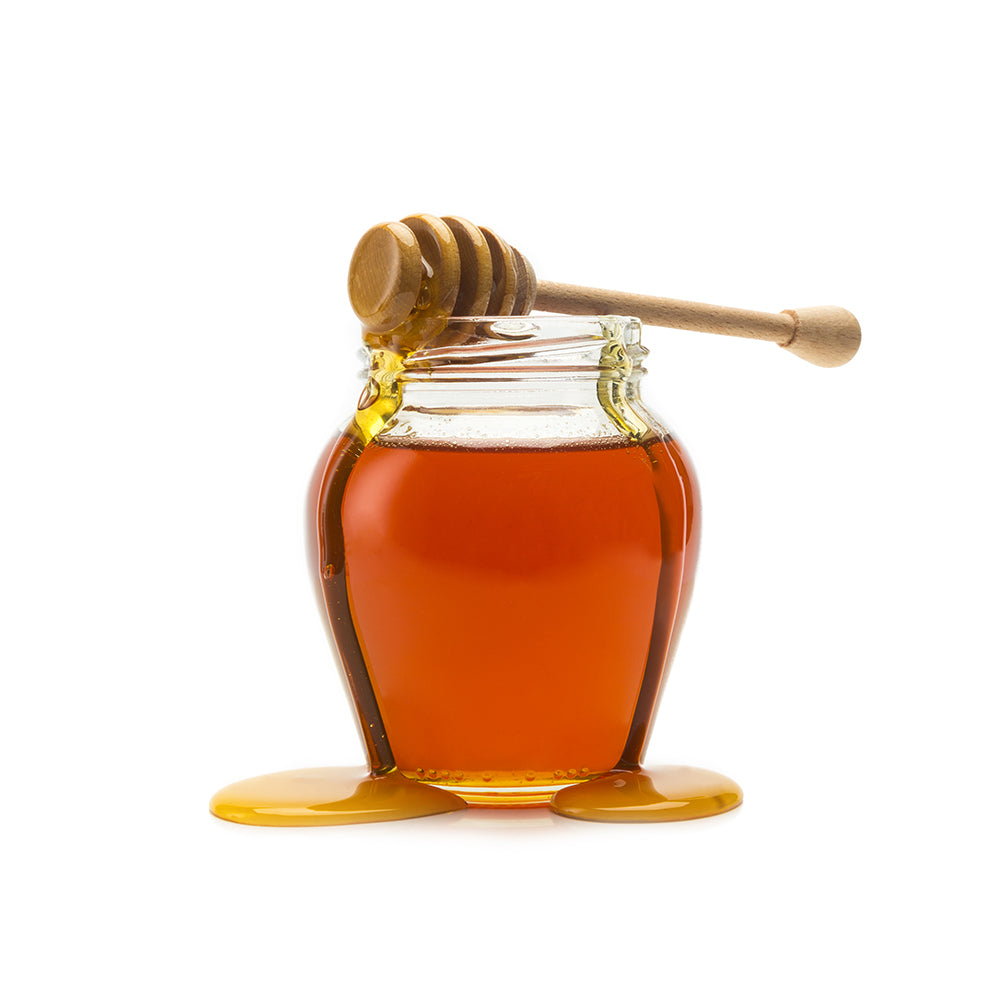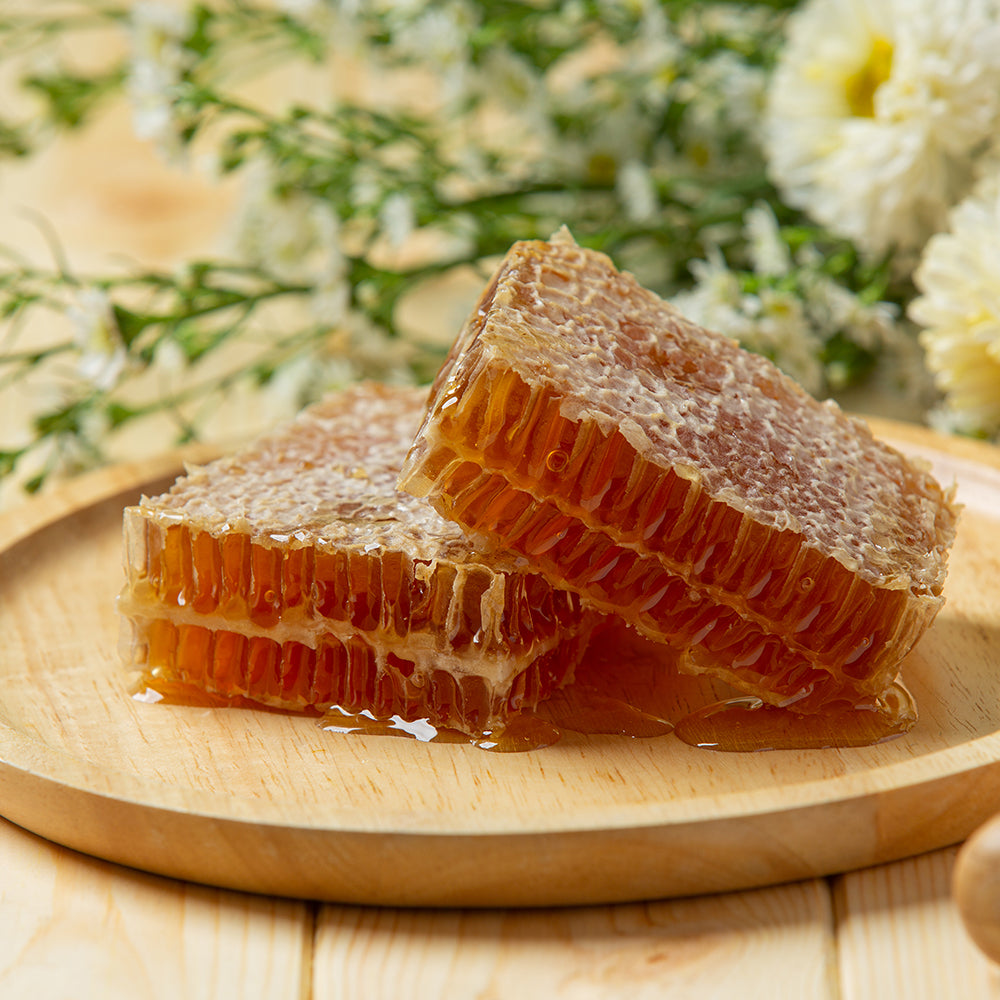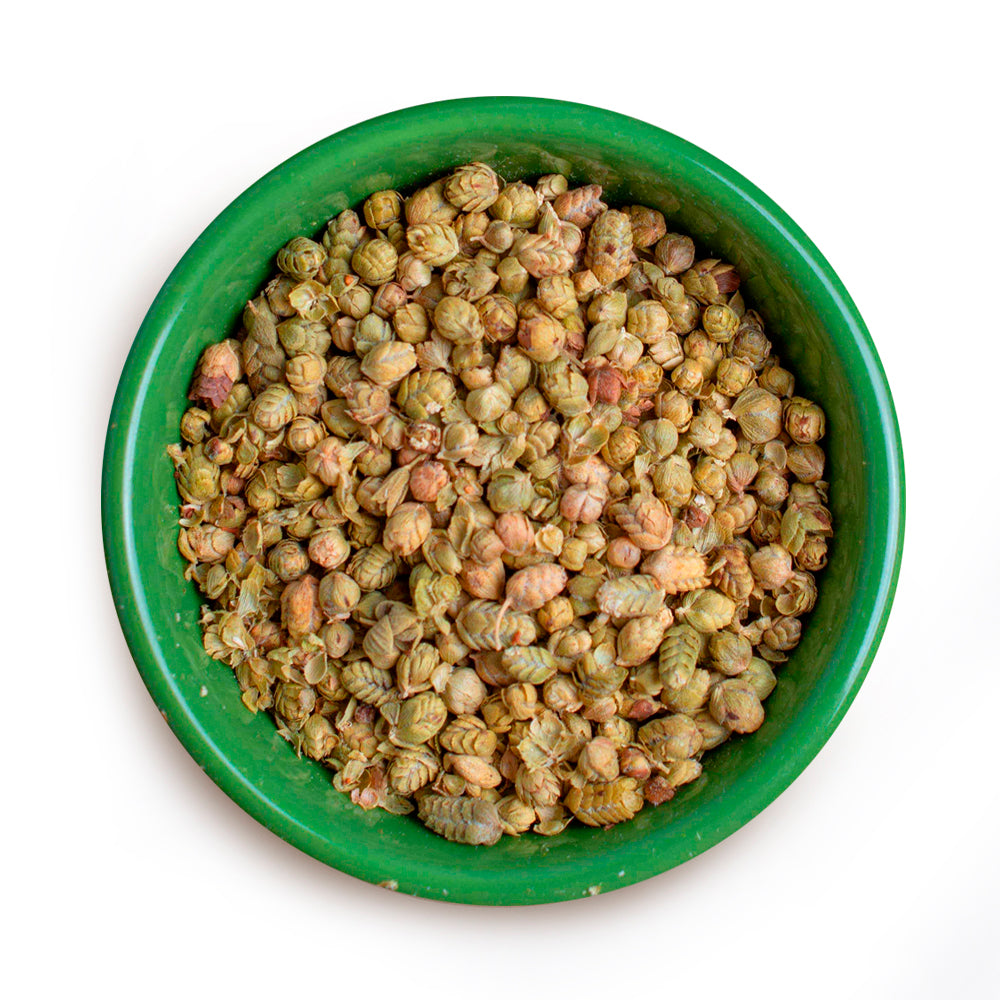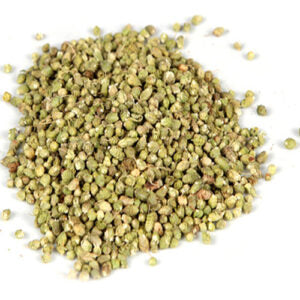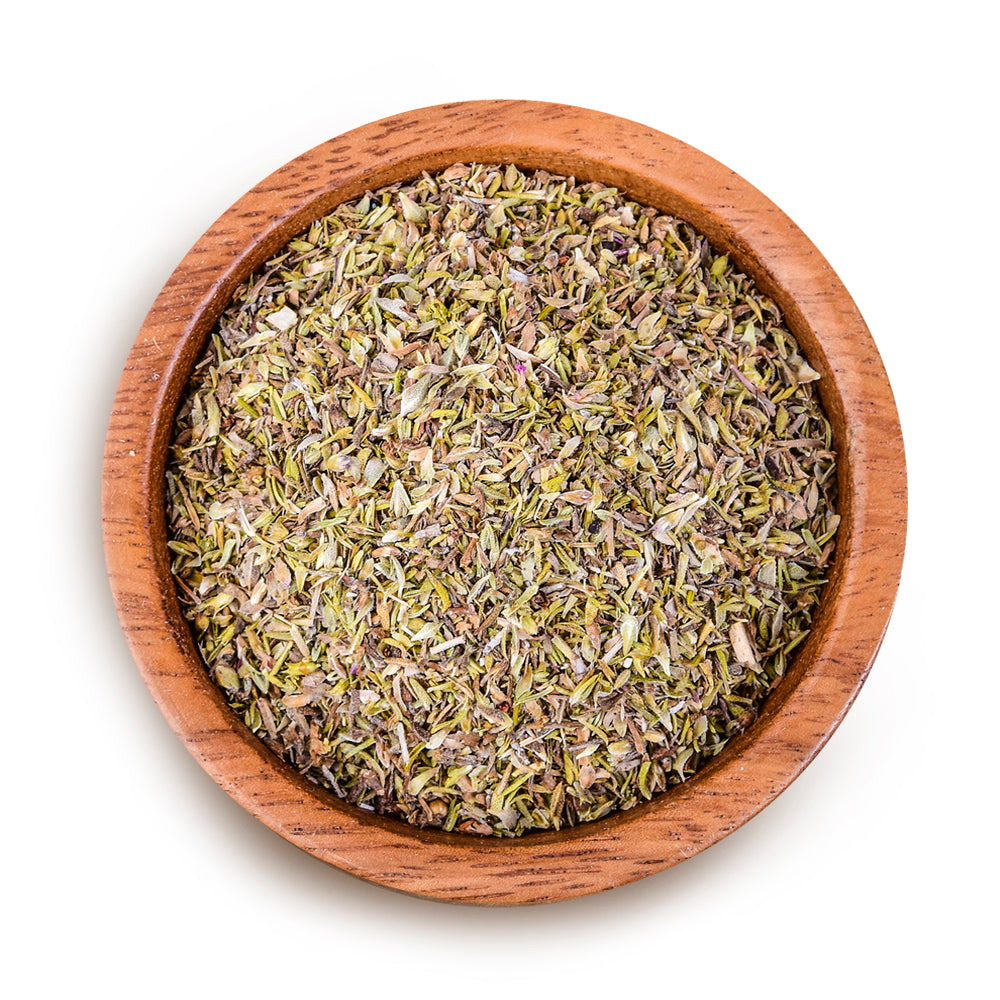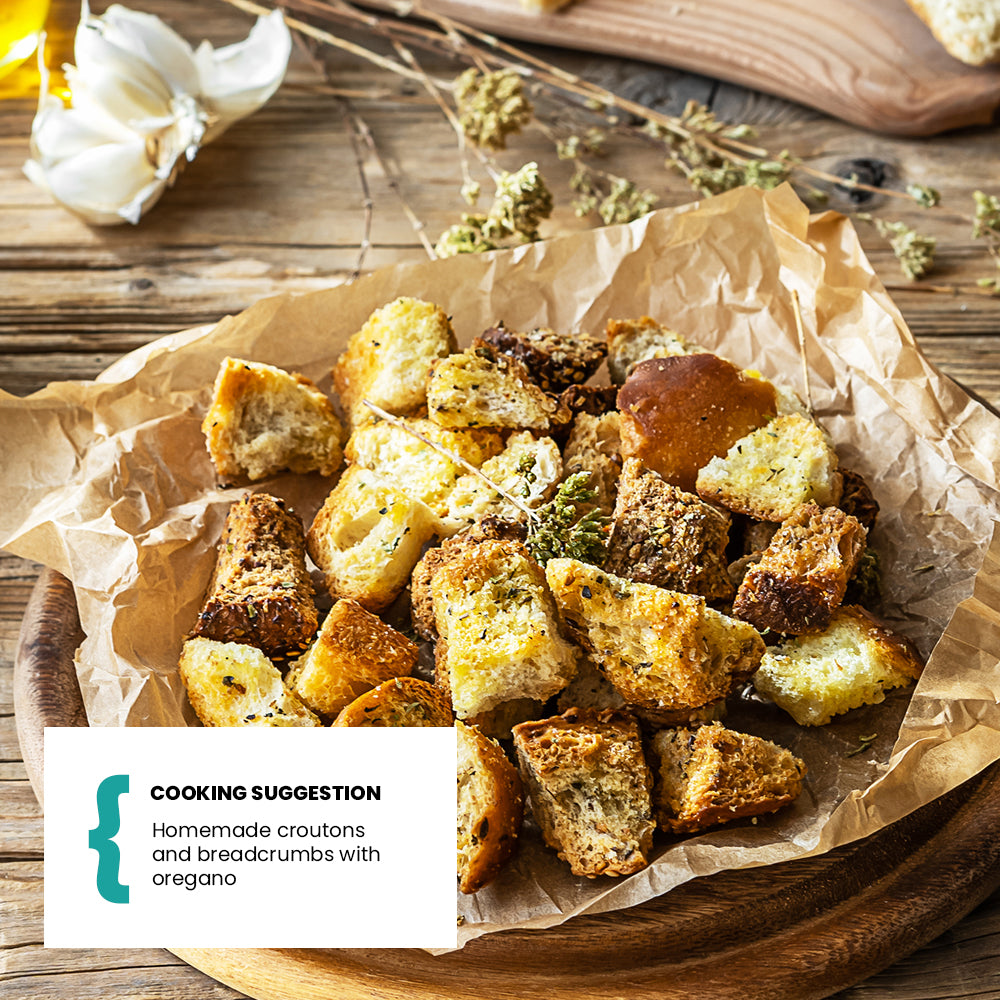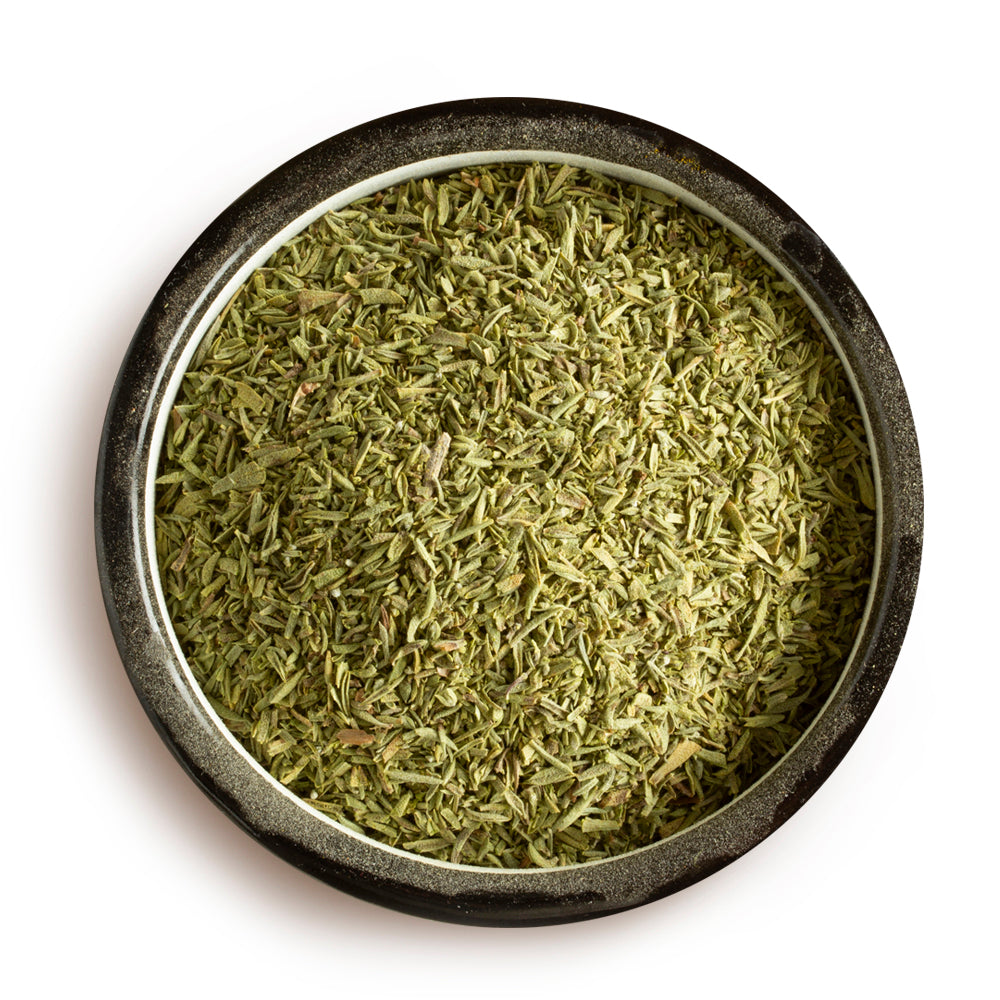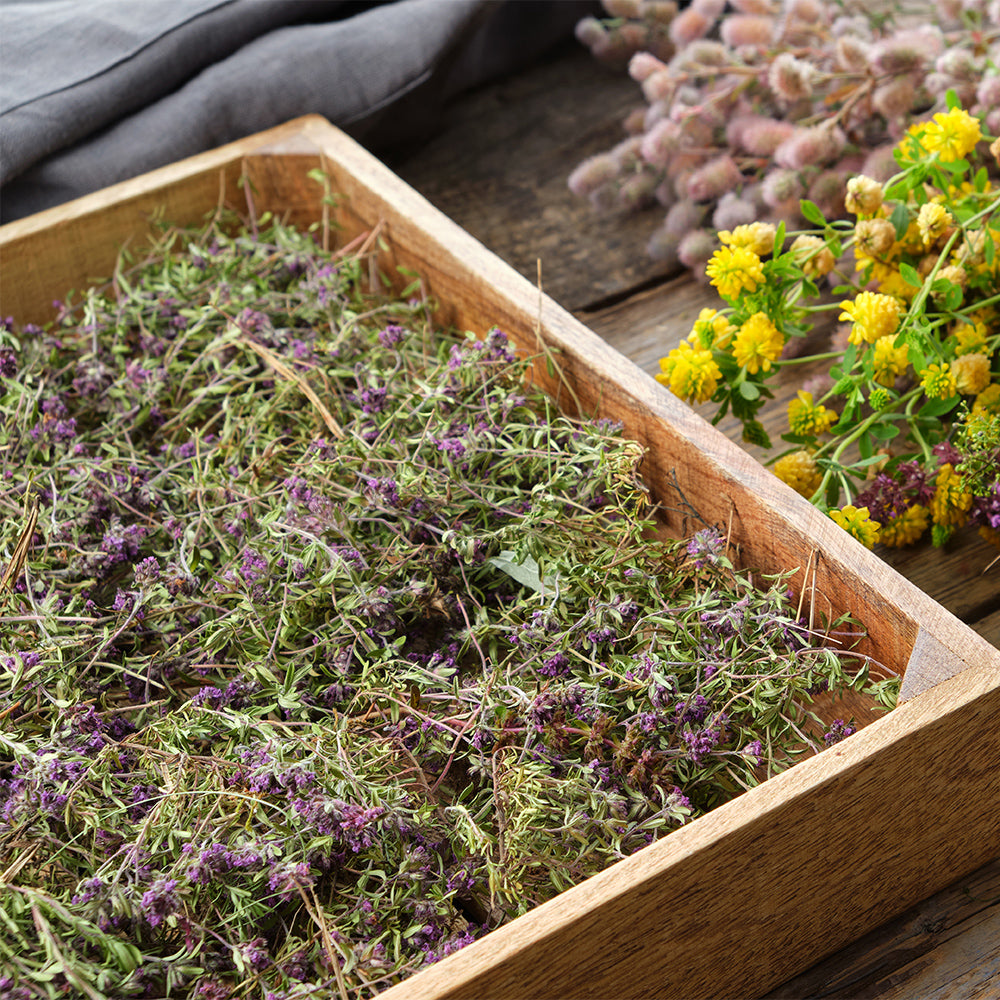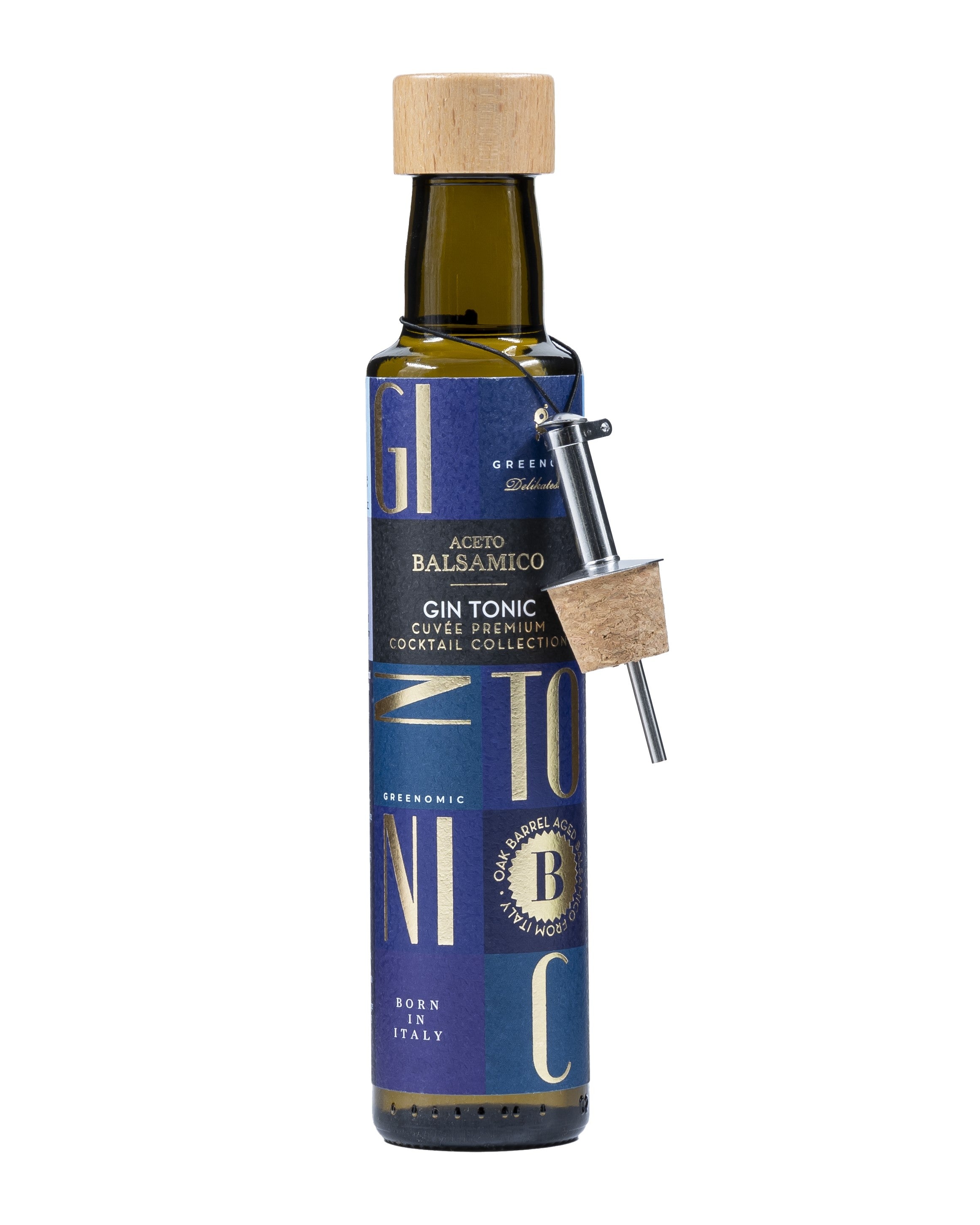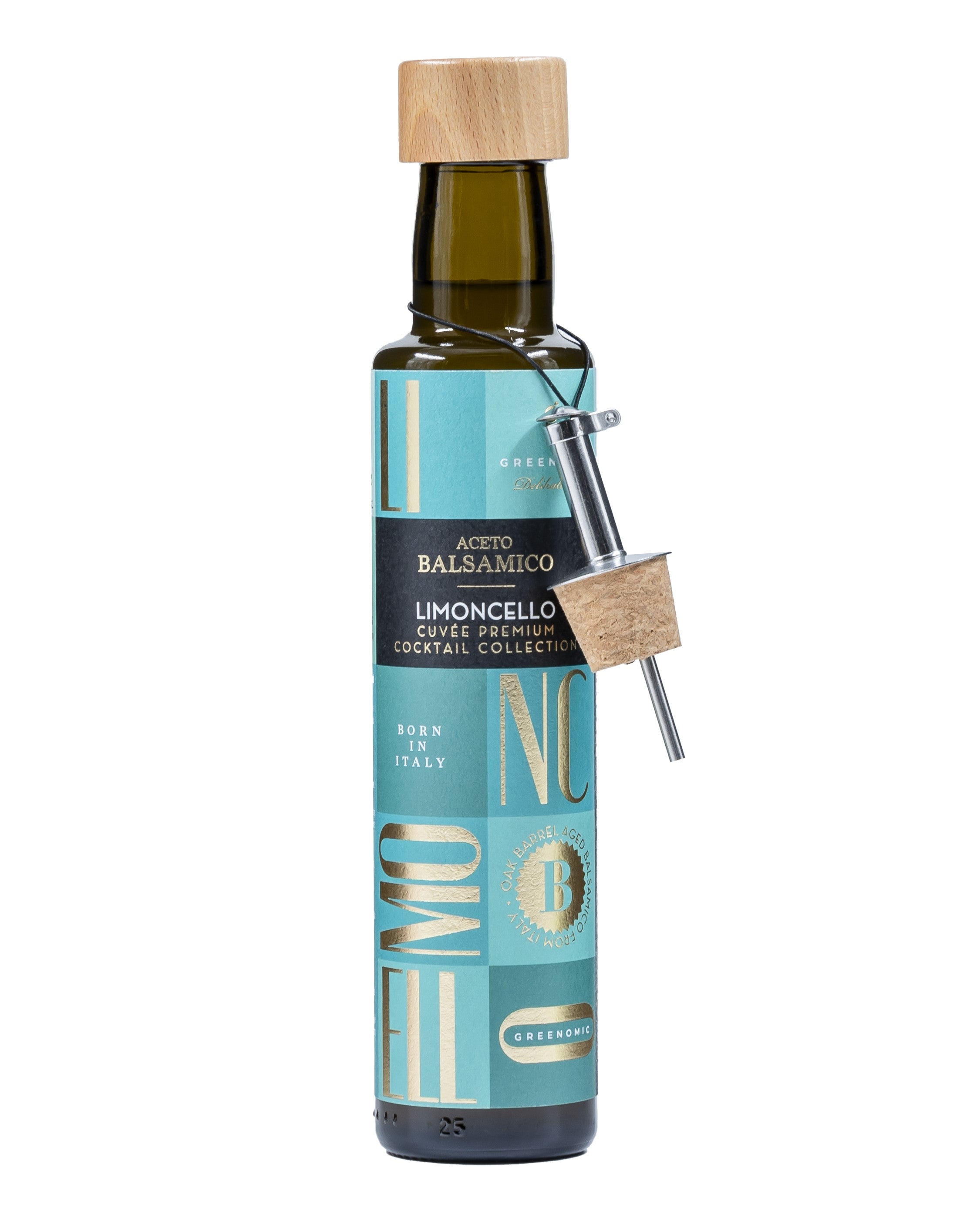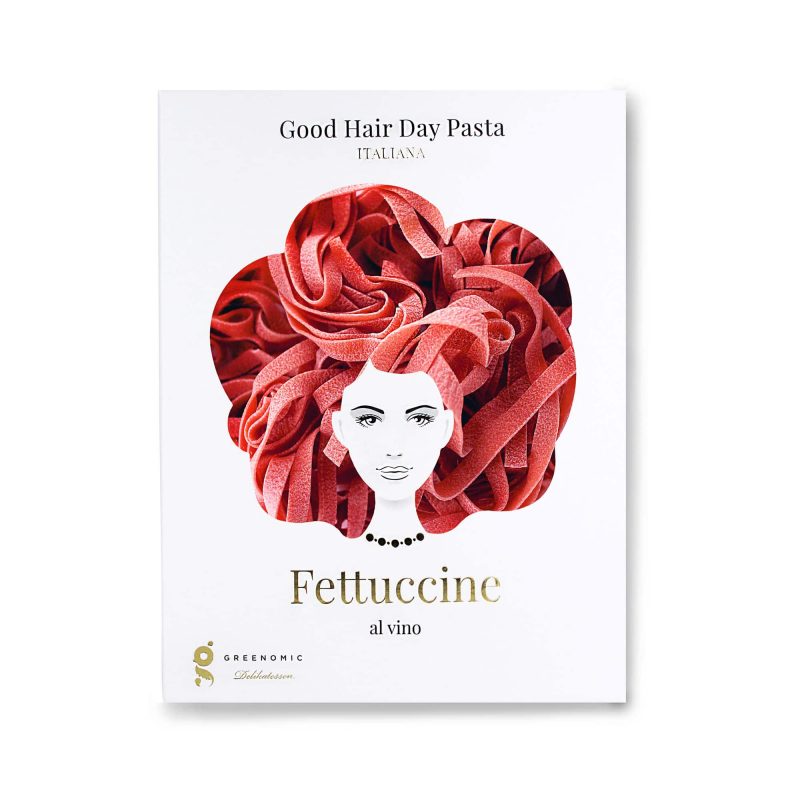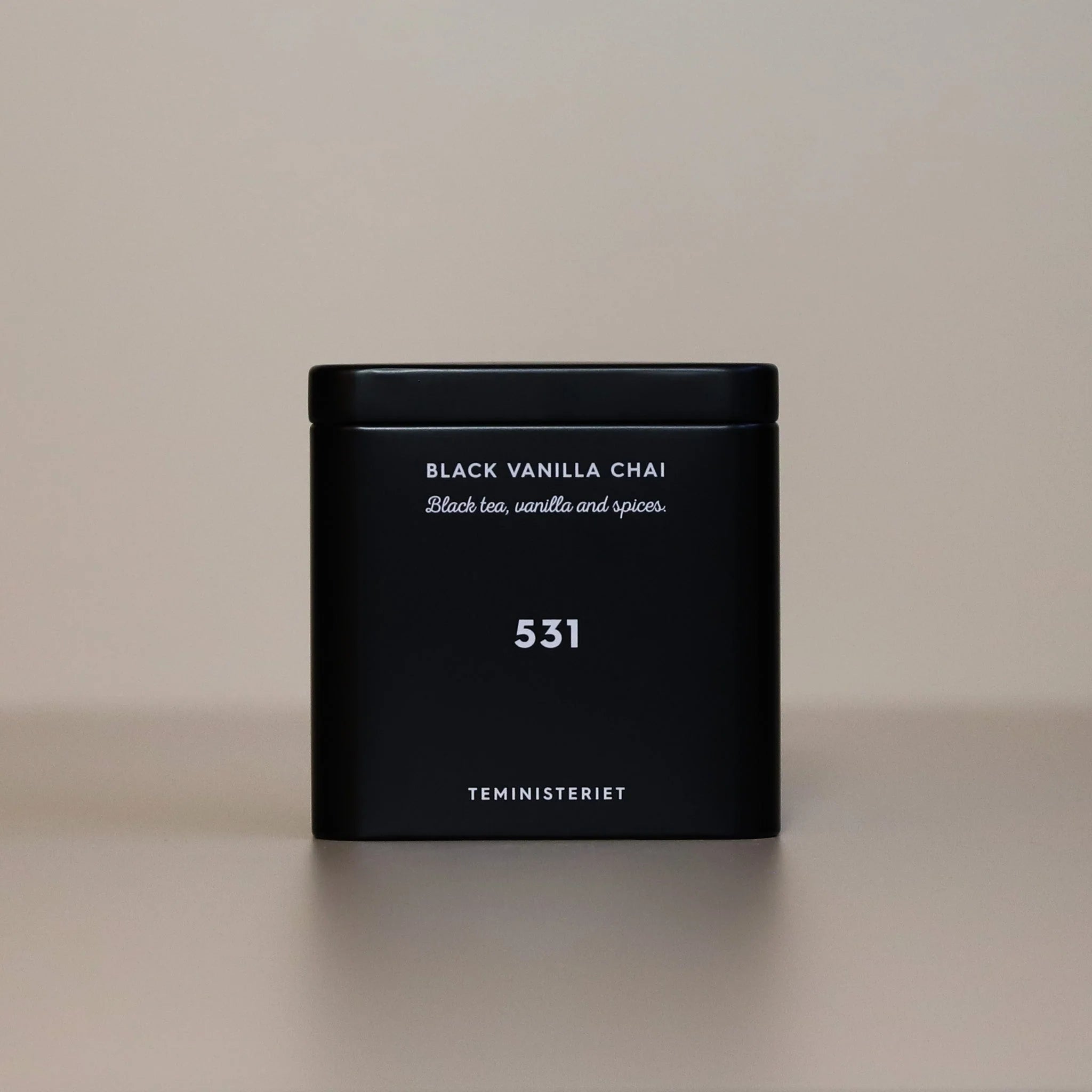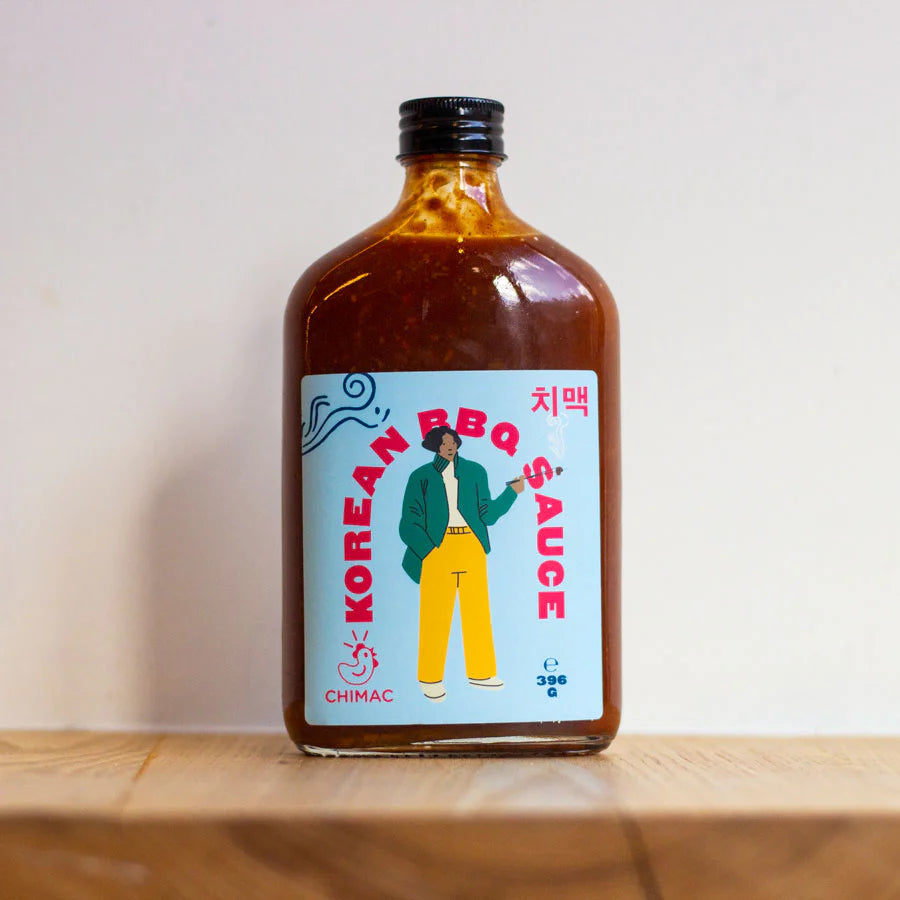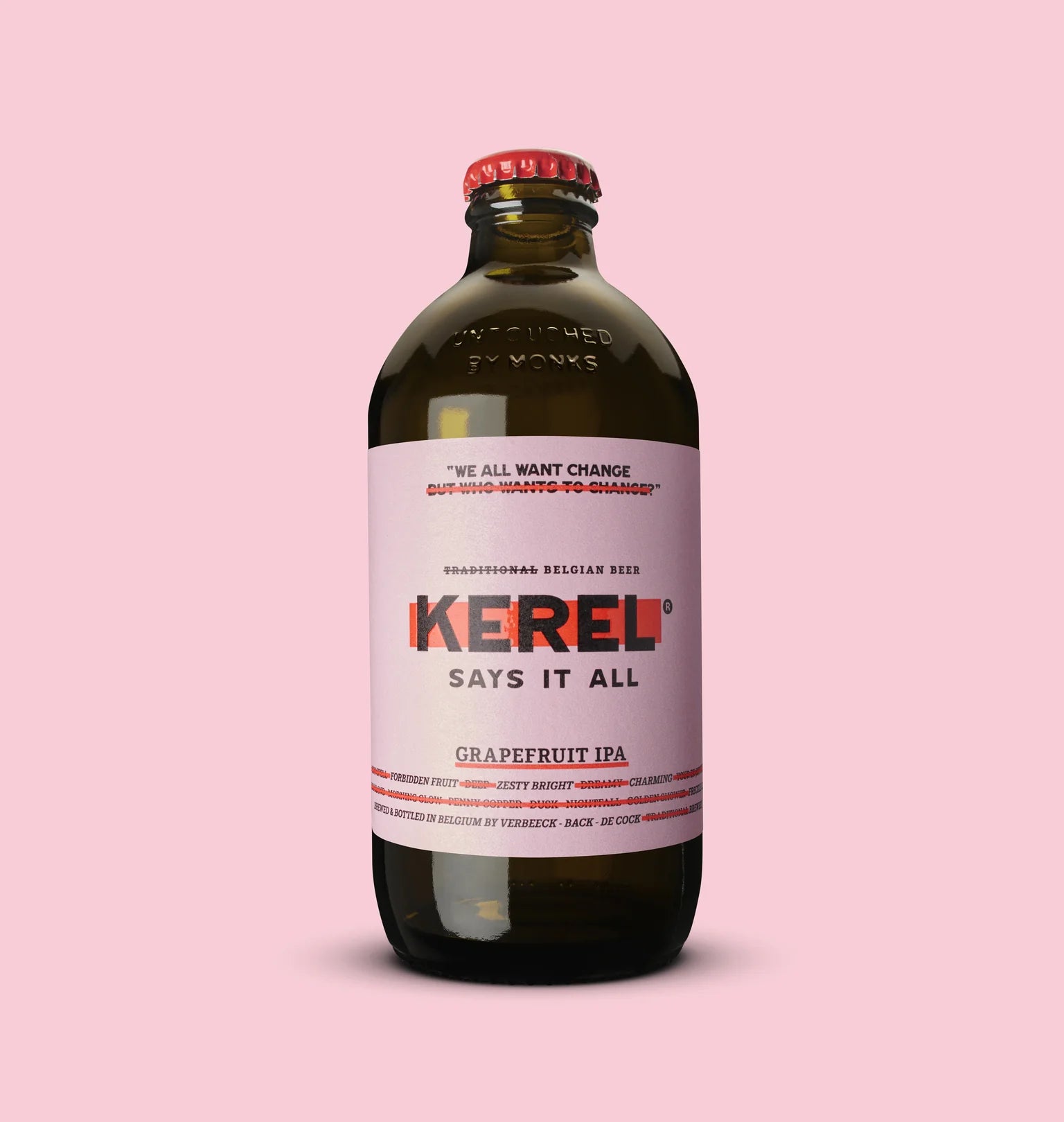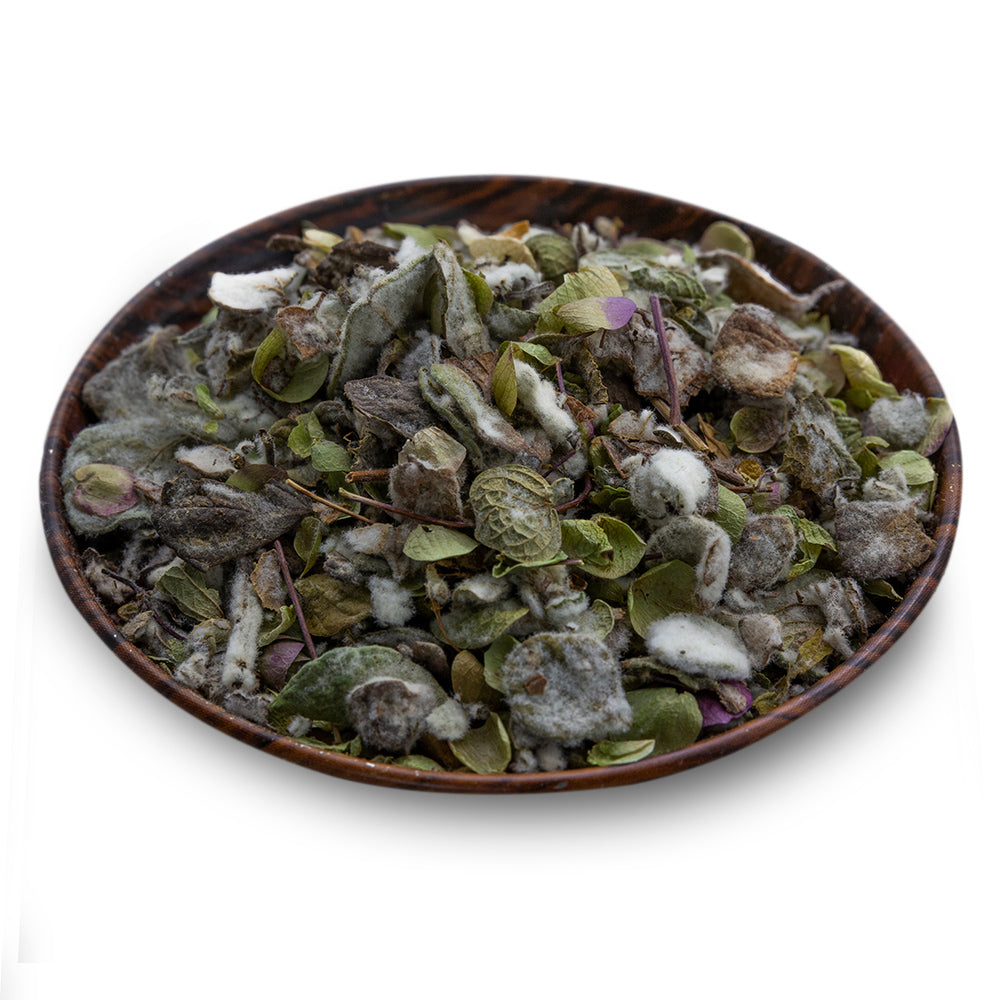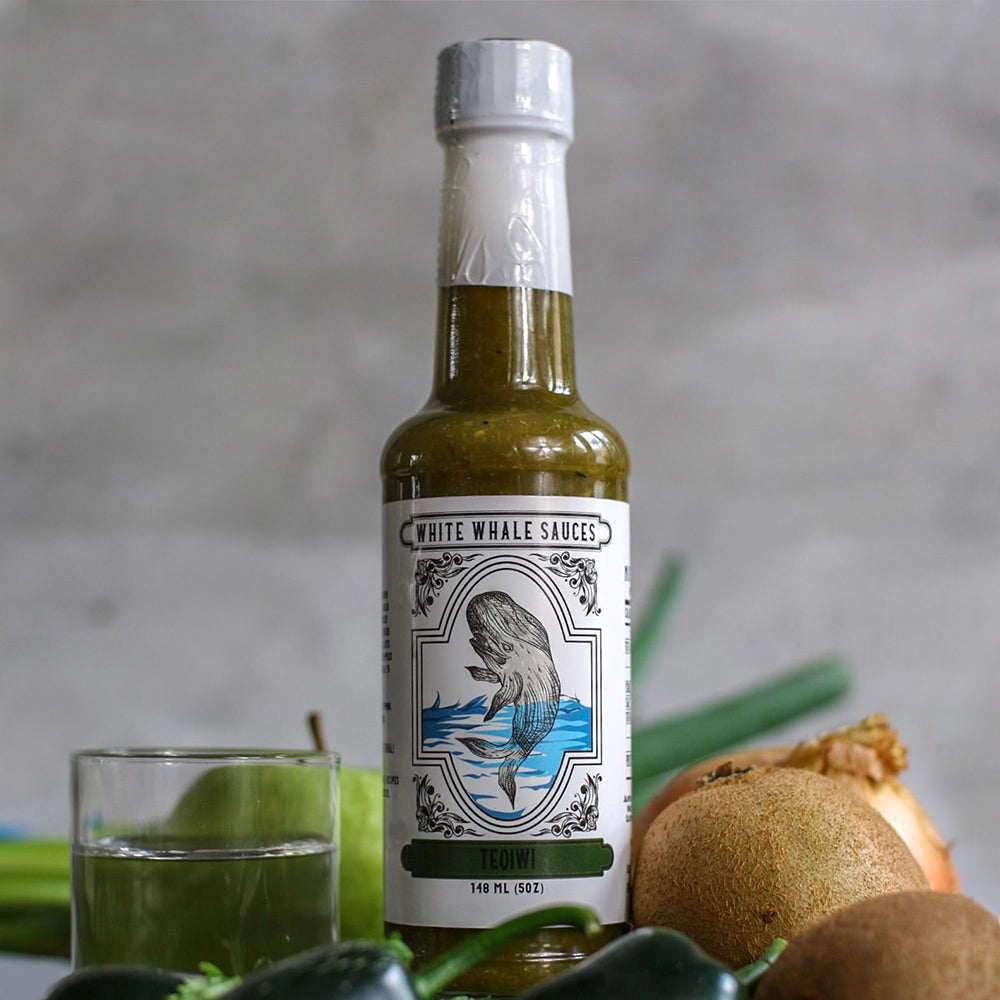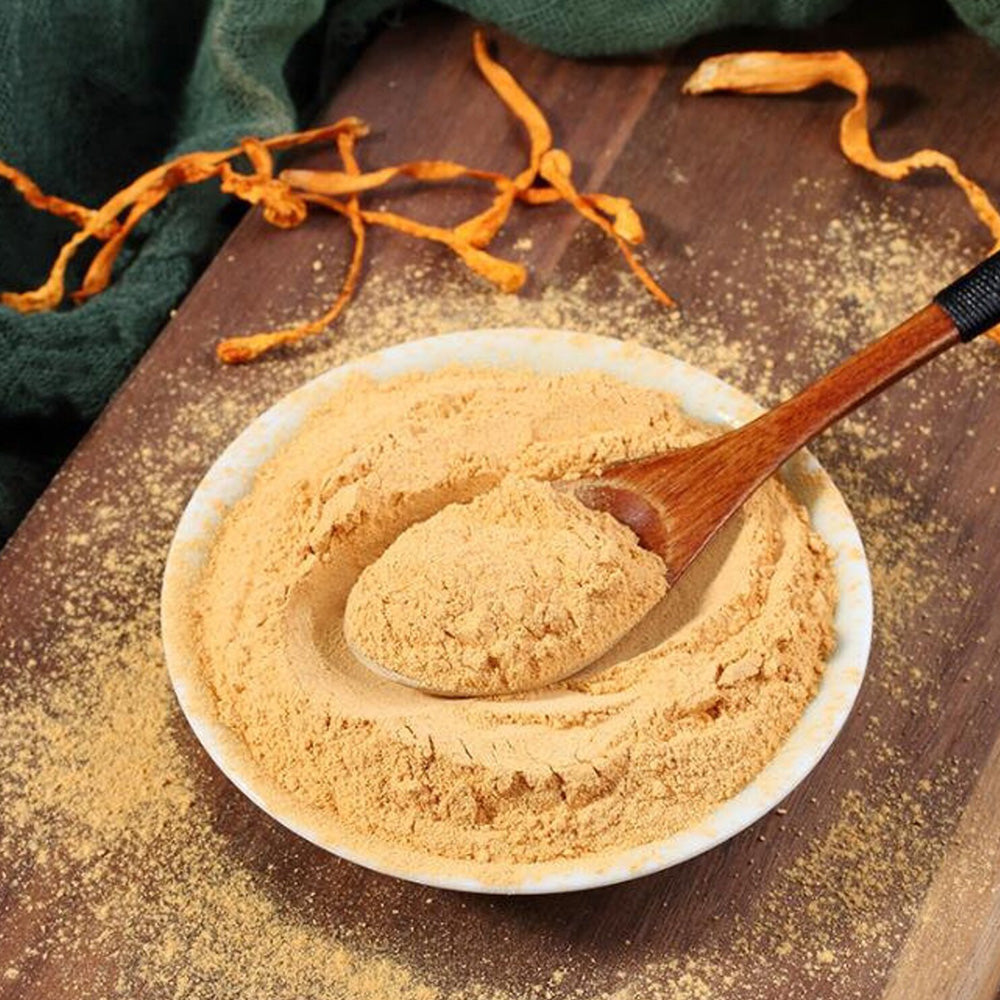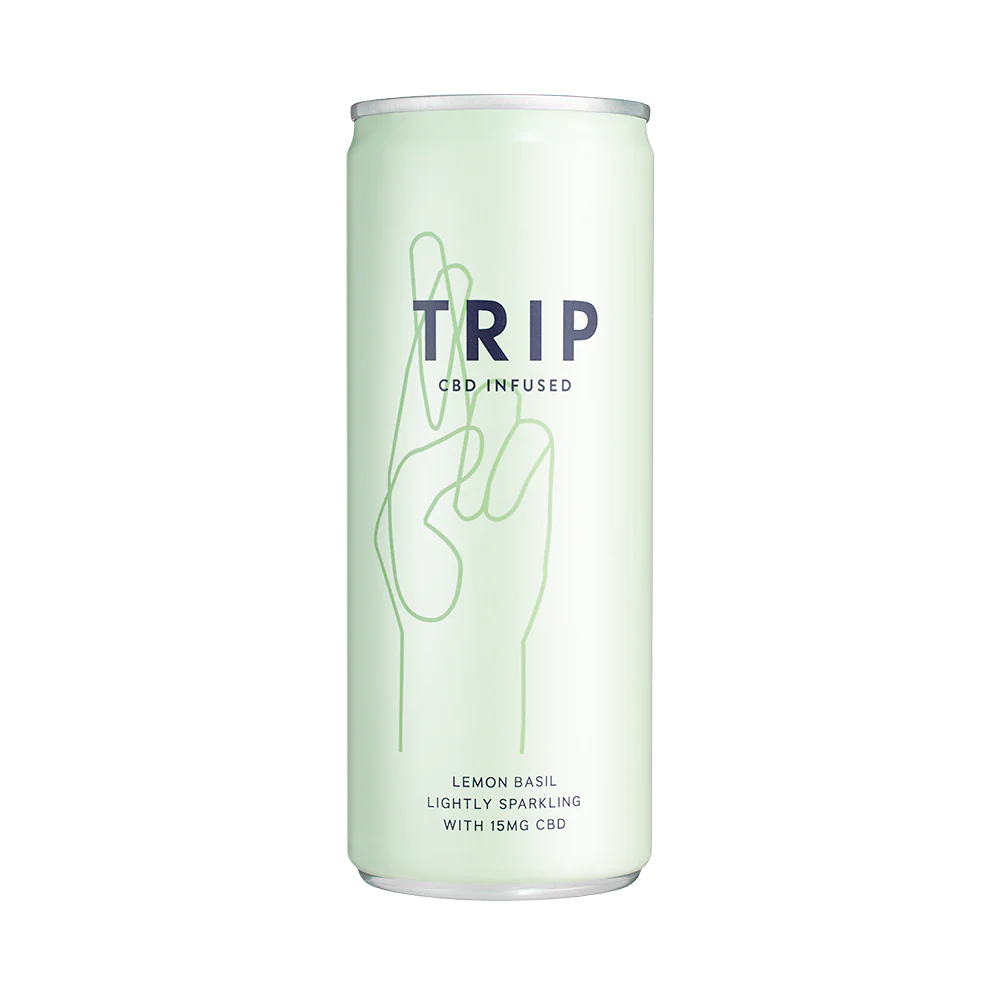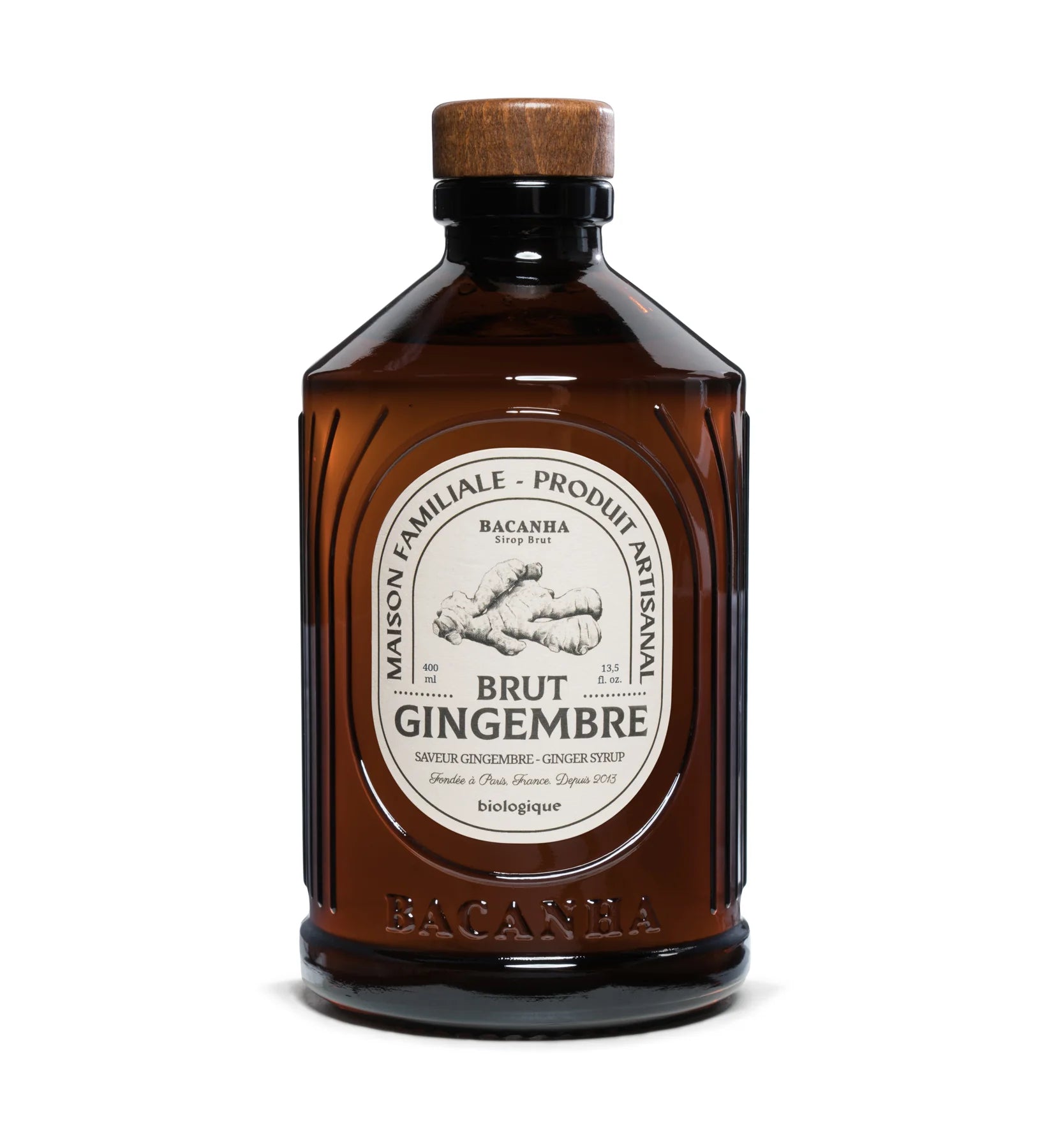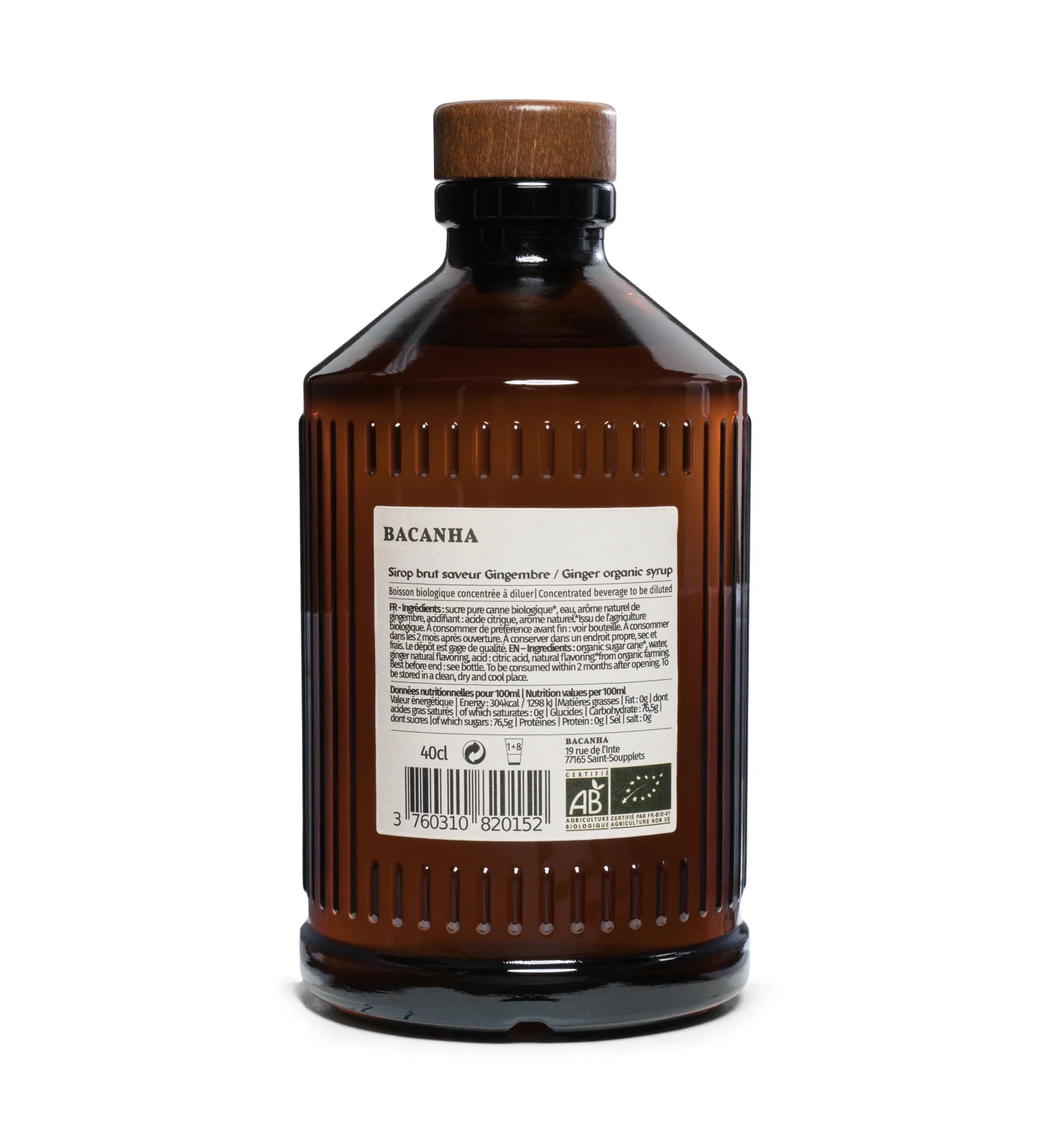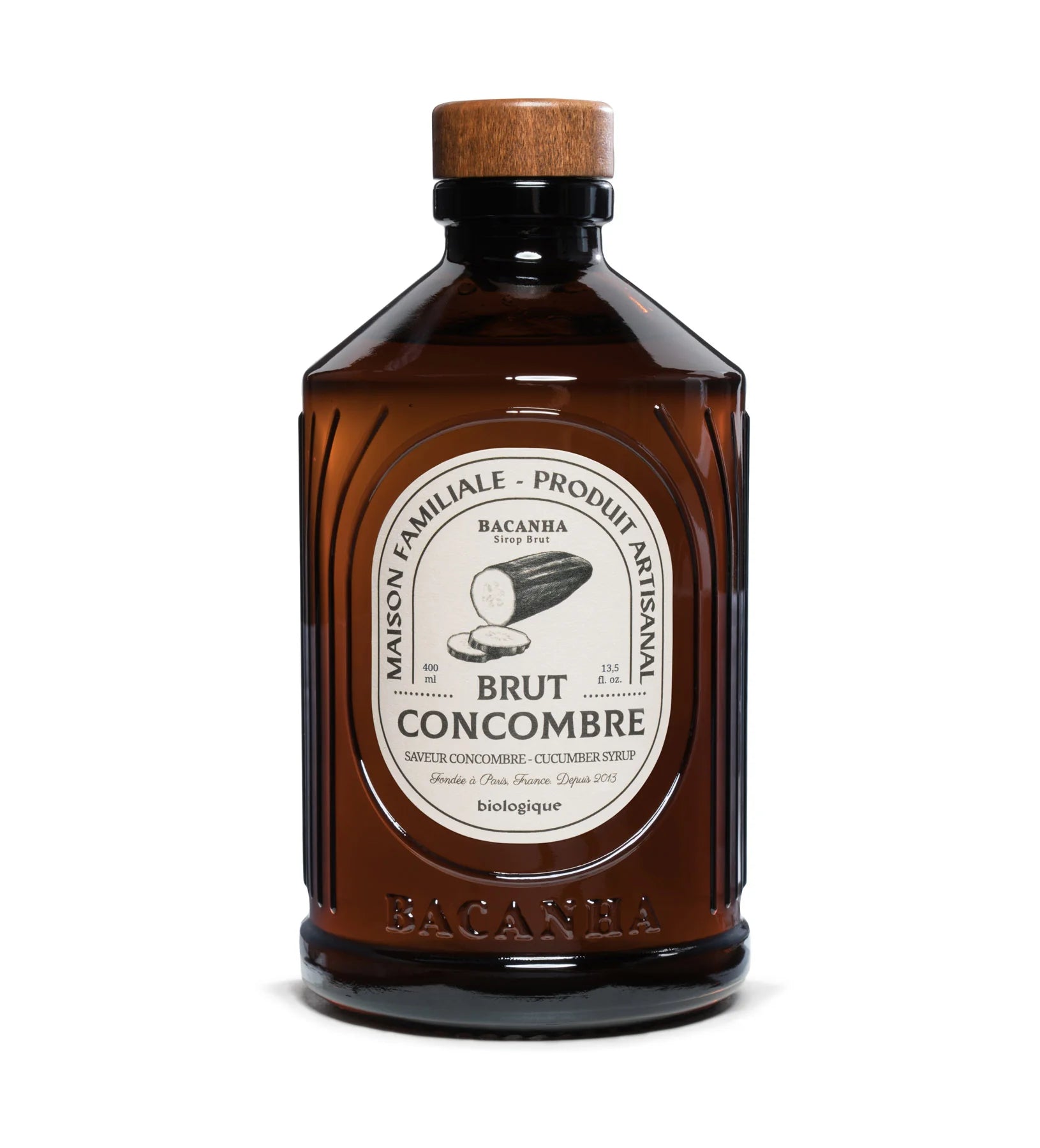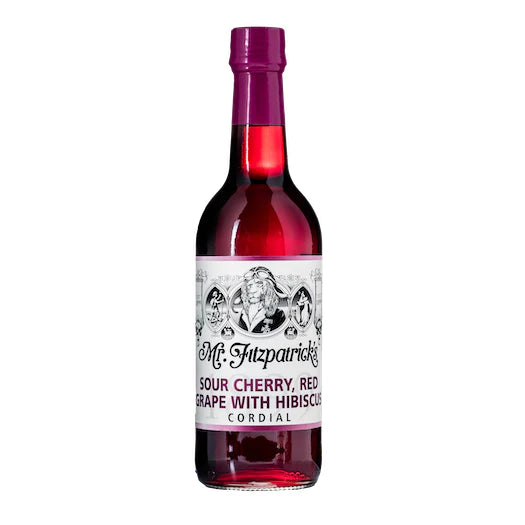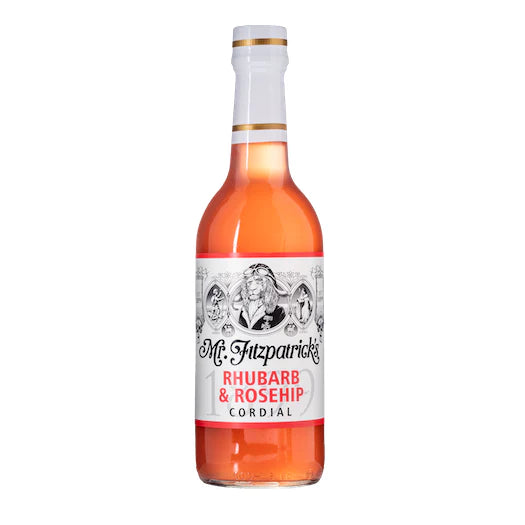About Sage Leaves Organic
Sage has a fragrant aroma and a powerful flavor that makes it an excellent flavor enhancer for a wide variety of foods including vegetables, seafood, steak, pork tenderloin, turkey, chicken, breadsticks, muffins, and many others.
It is a savory herb, slightly peppery with tones of camphor. The flavor is astringent but warm. This herb is faintly bitter and its flavor is an assertive one. Like for oregano, a little bit of sage goes a long way.
Sage has a very long history and has been used since ancient times for several purposes, from warding off evil to boosting female fertility. It originated in the Mediterranean and was noted as being one of the most important herbs. This herb was utilized by the Romans to assist in digestion and was also used to treat ulcers, wounds, and sore throats. Sage is an herb that is prized for its strong herbal aroma and earthy flavor. It is used in savory recipes and is a common ingredient in ‘holiday meal’ stuffing.
Storage and shelf life
Storage & Shelflife
Store organic sage leaves in a dry and sealable food storage container – we recommend glass. Keep the container in a cool, dry and dark area out of the sun and heat. Sunlight and heat can reduce the nutritional and flavoring quality of the herb. Keep the container away from liquids that may leak into it.
Organic sage leaves, when properly stored, have a shelf life for up to 1 year.
Shipping and delivery
The product is available for delivery and pick up from our store in de Pijp.
The product is delivered in recycled paper bags.
Nutricional information
Per teaspoon (0,7g)
Calories 2
Total Fat 0,1gr
Saturated Fat 0g
Trans Fat 0g
Polyunsaturated Fat 0g
Monounsaturated Fat 0g
Cholesterol 0mg
Sodium 0,1mg
Potassium 7,5mg
Calcium 11,56mg
Total Carbohydrates 0,4g
Dietary Fiber 0,3g
Sugars 0g
Protein 0,1g
Allergens: No known allergens
How to use
Sage is one if the popular herbs in North American and European cuisines and is commonly used fresh or dried. Sage is an herb that retains much of its flavor once it is dried. It has an earthy taste, combining the scents and flavors of citrus and pine. Dried sage should be added at the start so the flavor has time to mellow. Sage is often paired with other herbs such as thyme, marjoram, and rosemary and harmonizes well with garlic, onion, oregano, parsley, and laurel. The pine and citrus notes of sage are good at cutting through the richness of meats like pork and lamb.
Flavor Pairings
Cheese, beans, apples, onions, tomatoes, laurel, caraway, celery leaf, garlic, ginger, marjoram, paprika, parsley, savory, thyme, pork, lamb.
Other interesting information
During the Middle Ages, sage was believed to be something of a cure-all, able to perform a variety of wonders from warding off the evil eye and keeping the plague at bay to curing fevers, colds and just about every common ailment imaginable.
There are more than 900 species of sage, only some of them used in cooking. It is a member of the mint family and is native to the Mediterranean.
